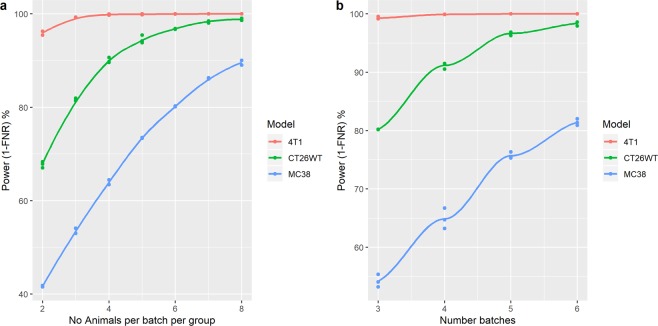Figure 3.
Simulations to explore impact of number the number of animals or batches on the false negative rate. (a) Exploration impact of varying the number of animals per group per batch for a three-batch design for three different models on the FNR of the random effect regression model. (b) Exploration of impact of varying the number of batches on the FNR when three animals per batch per group with the random effect regression model. In these simulations, experimental data was constructed to consisted of independently sampled batches with a control and treated arm where the treatment effect was normally distributed with a mean effect of a 30% reduction in growth rate with a standard deviation 10% of the mean effect. The growth rate characteristics were the average growth rate for a line and a standard deviation value that encompasses 75% of the values seen. Batch variation was assumed to be normally distributed with a mean of 0 and variance of 20% of the baseline growth rate characteristics. The experimental data generated was processed by the various analytical techniques using a 5% significance threshold. For each scenario, to explore variation in the outcome the process was repeated 2000 times and the FNR estimated. This simulation process was repeated three times for each scenario explored.

